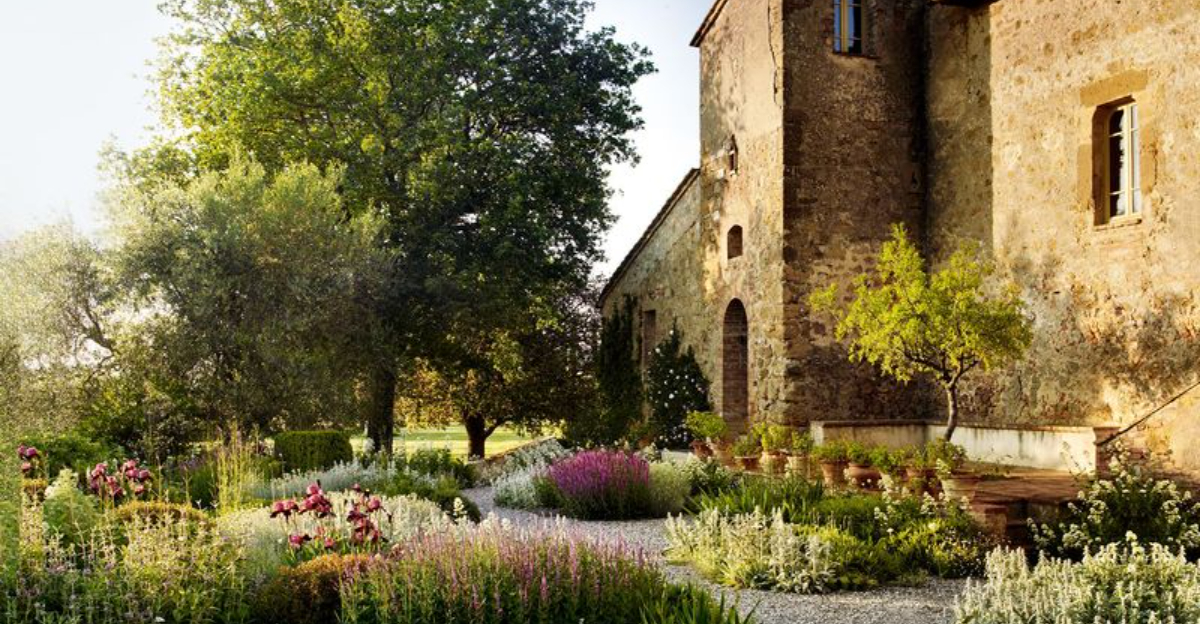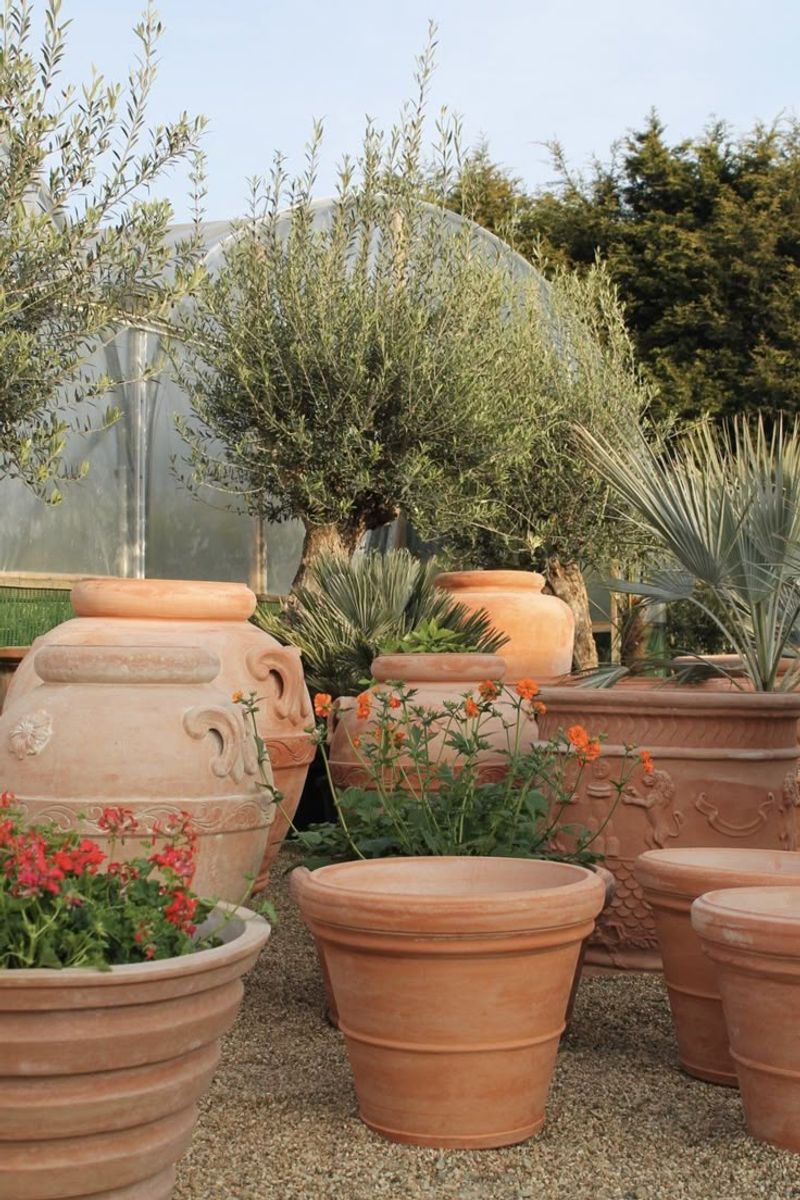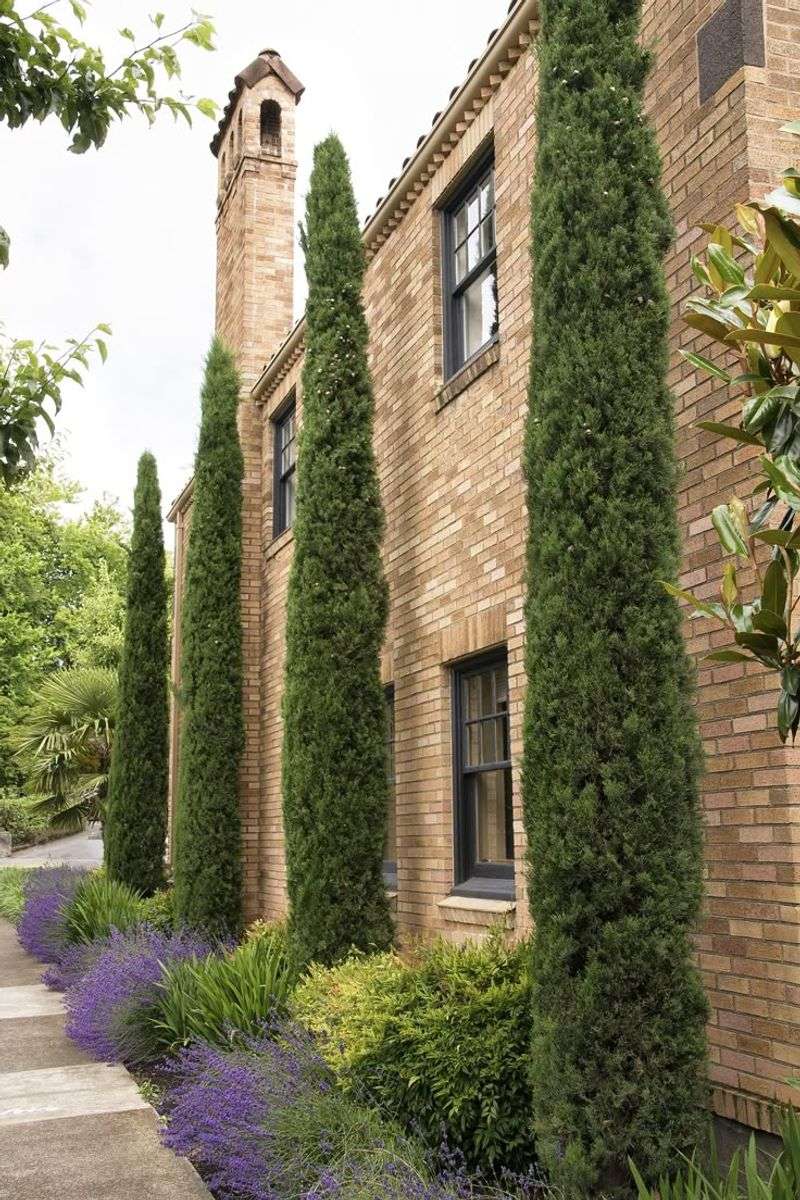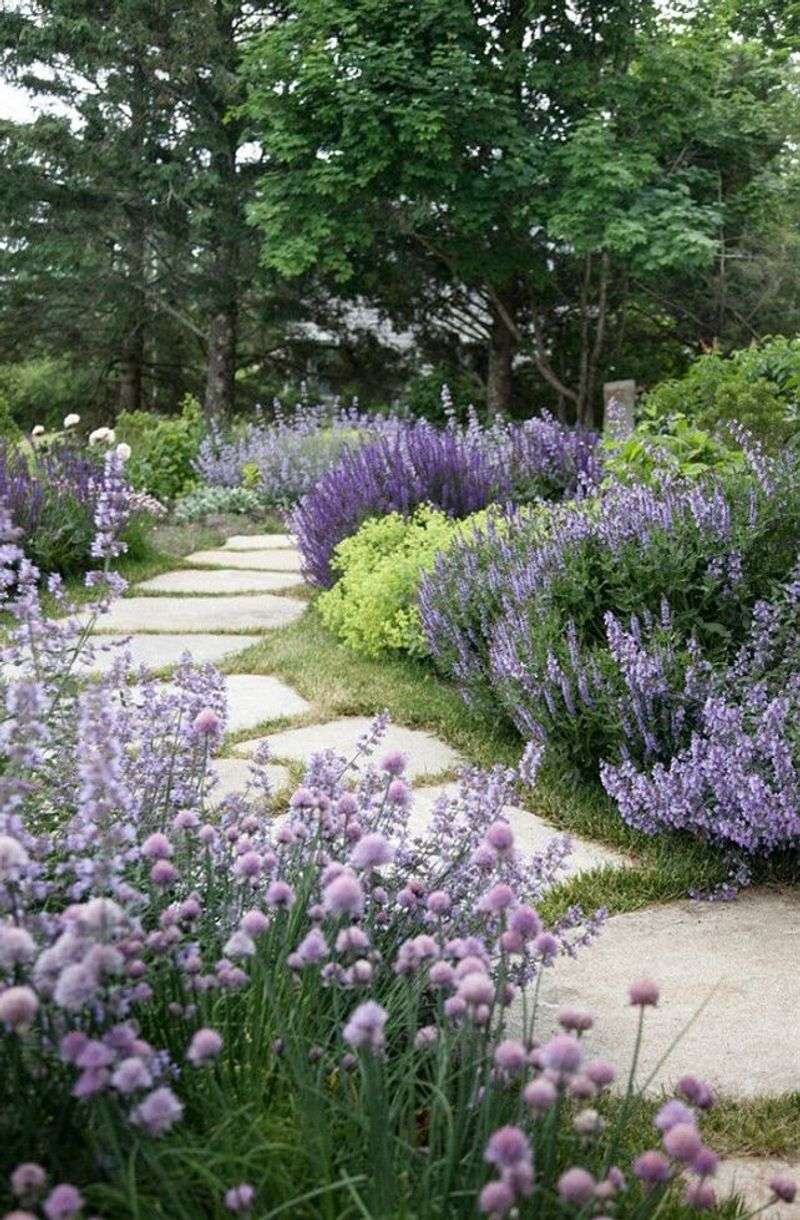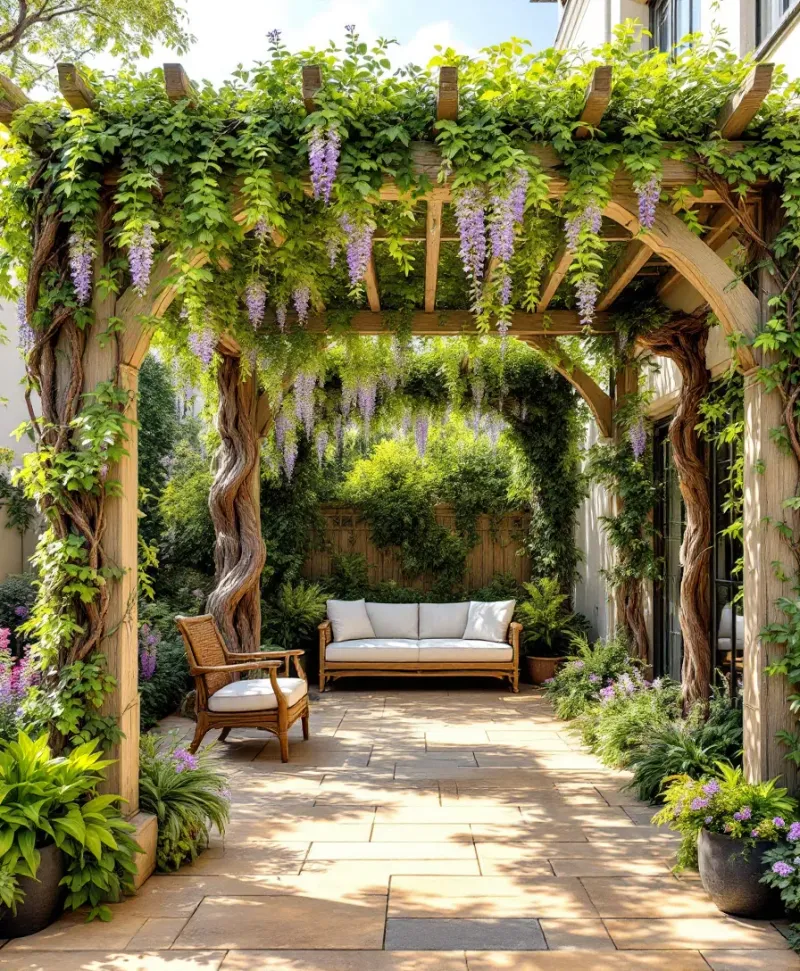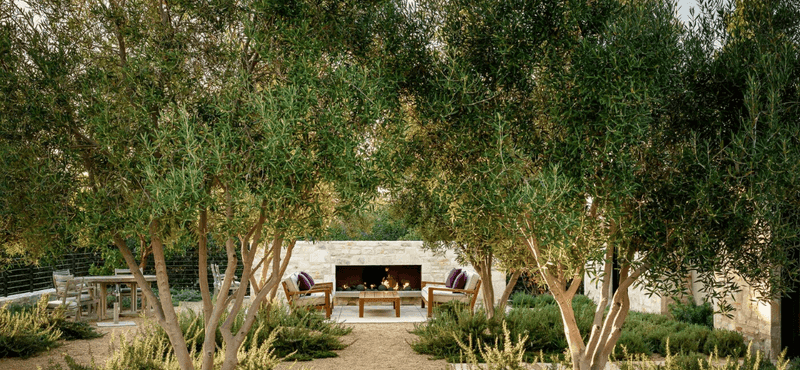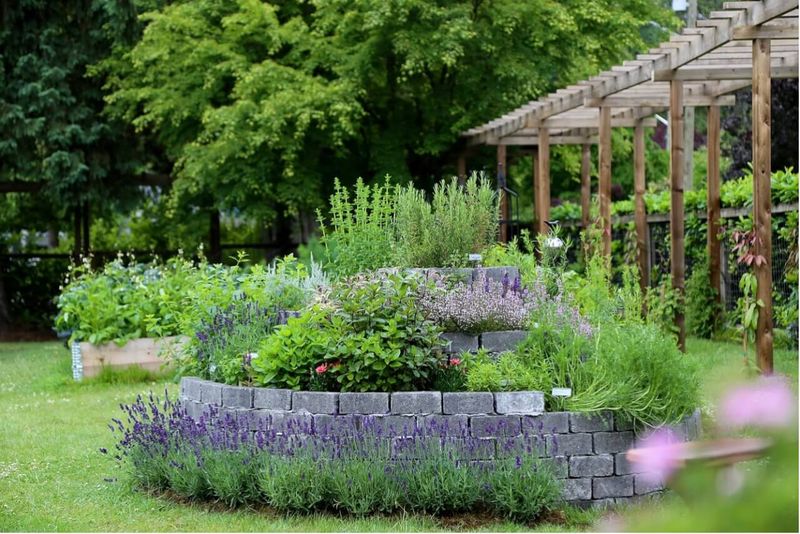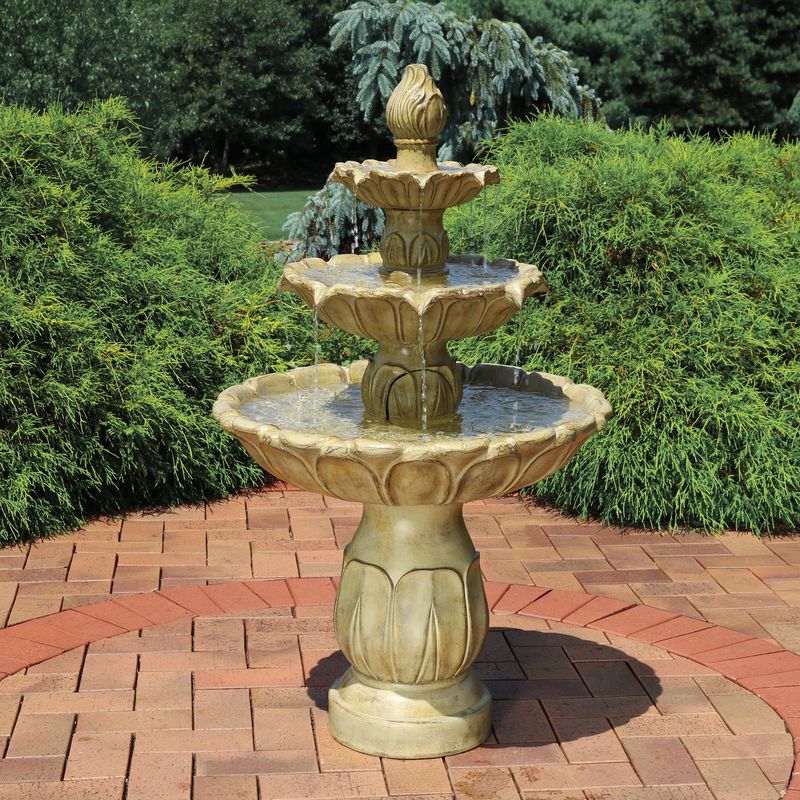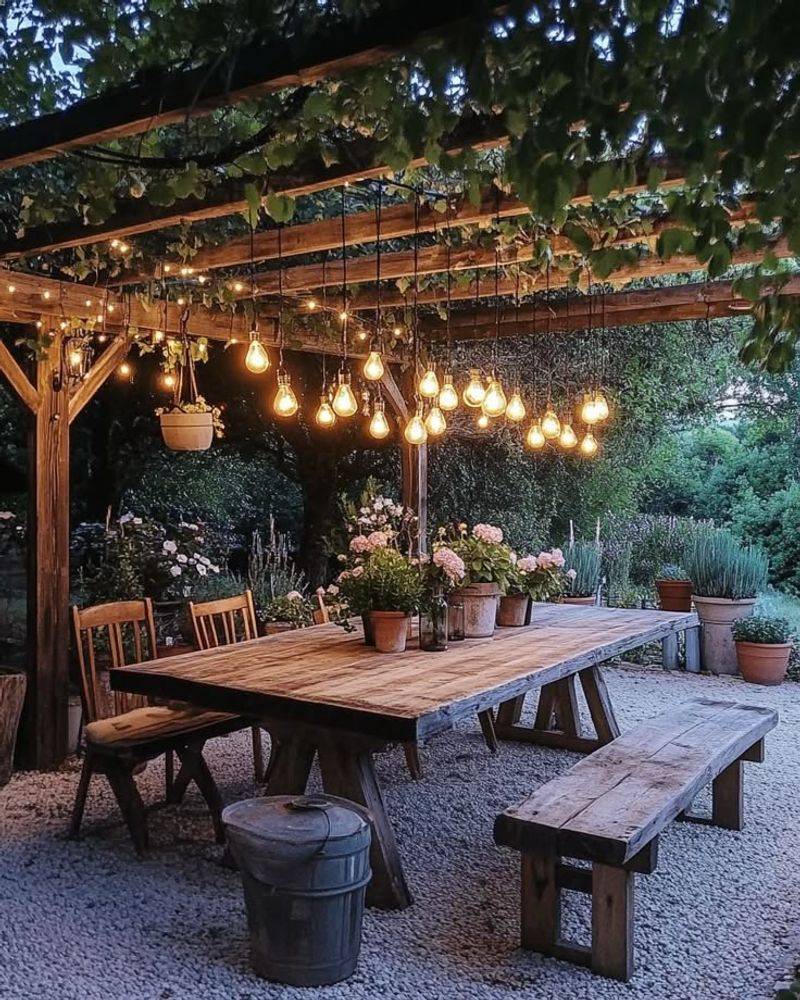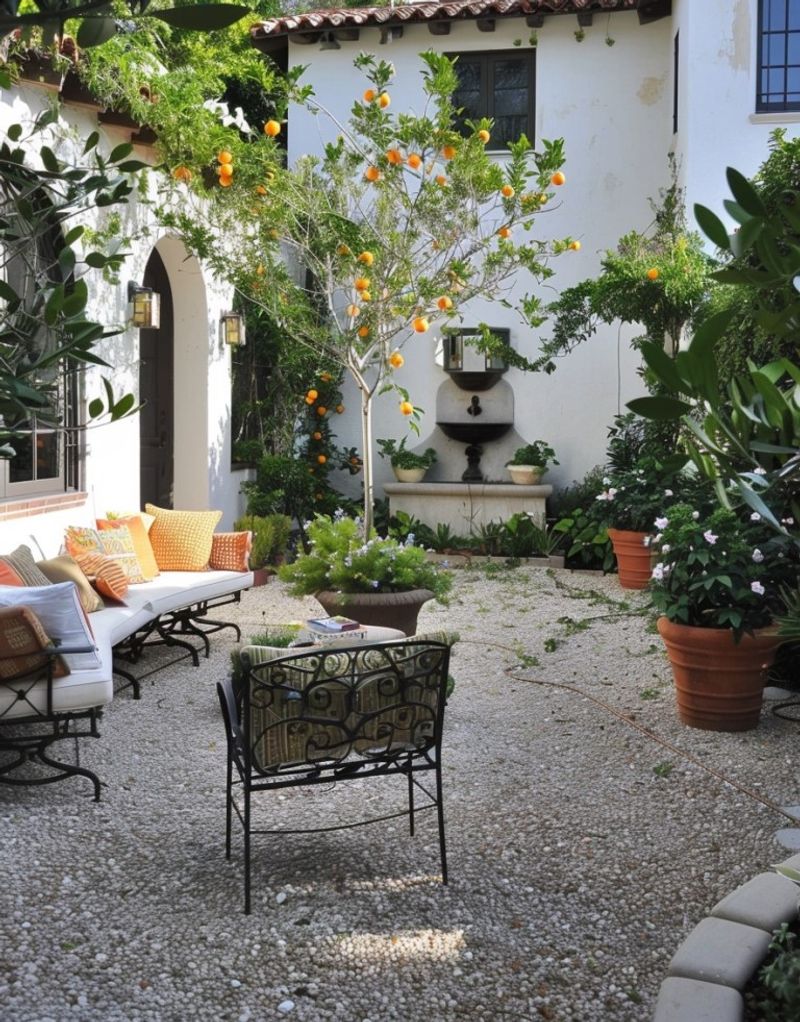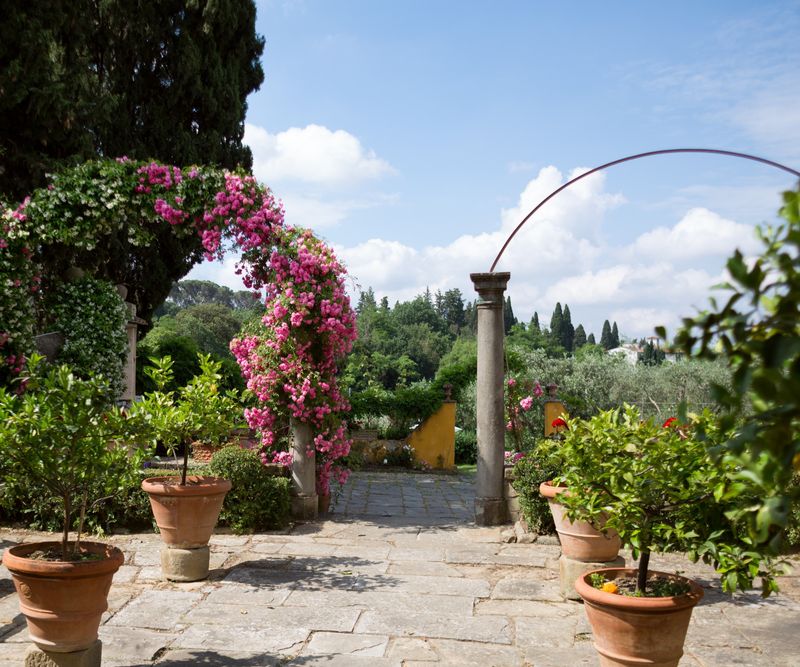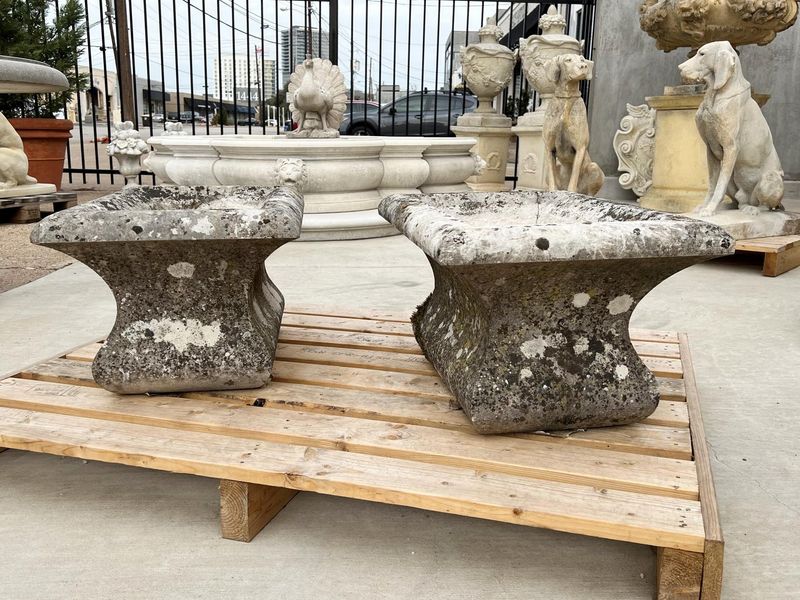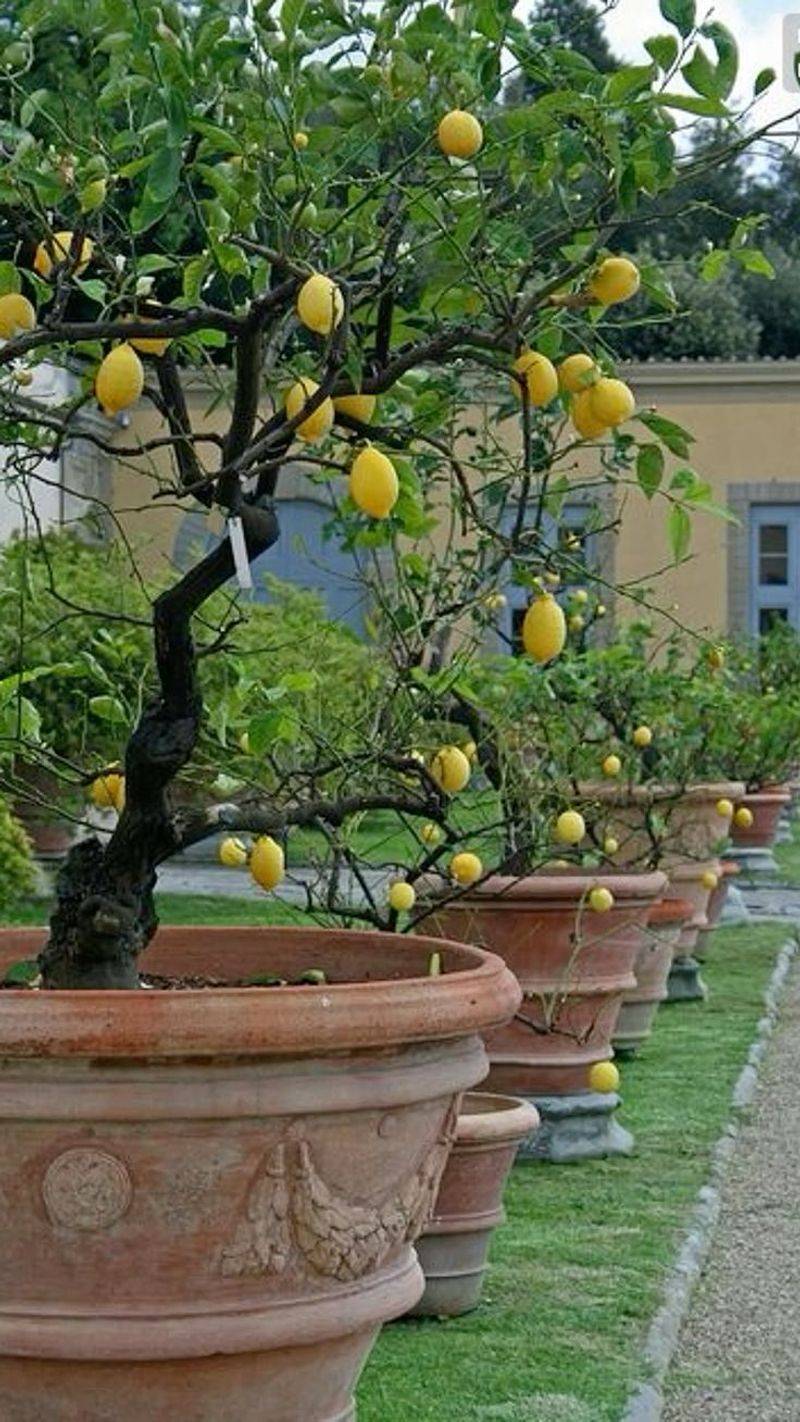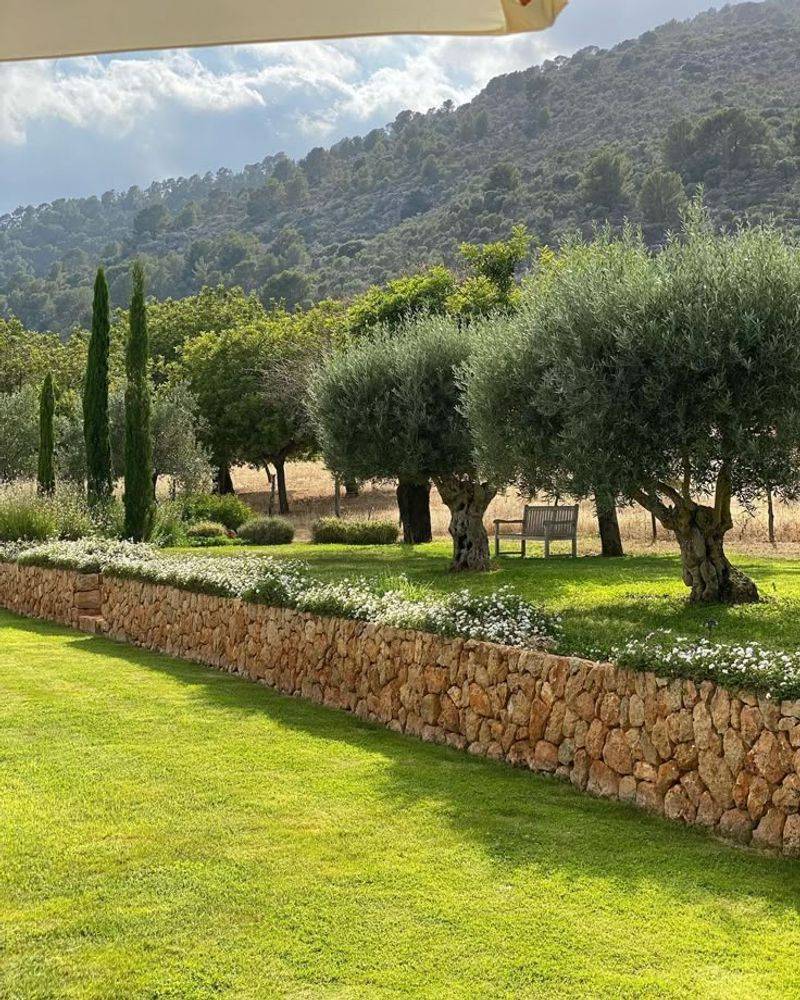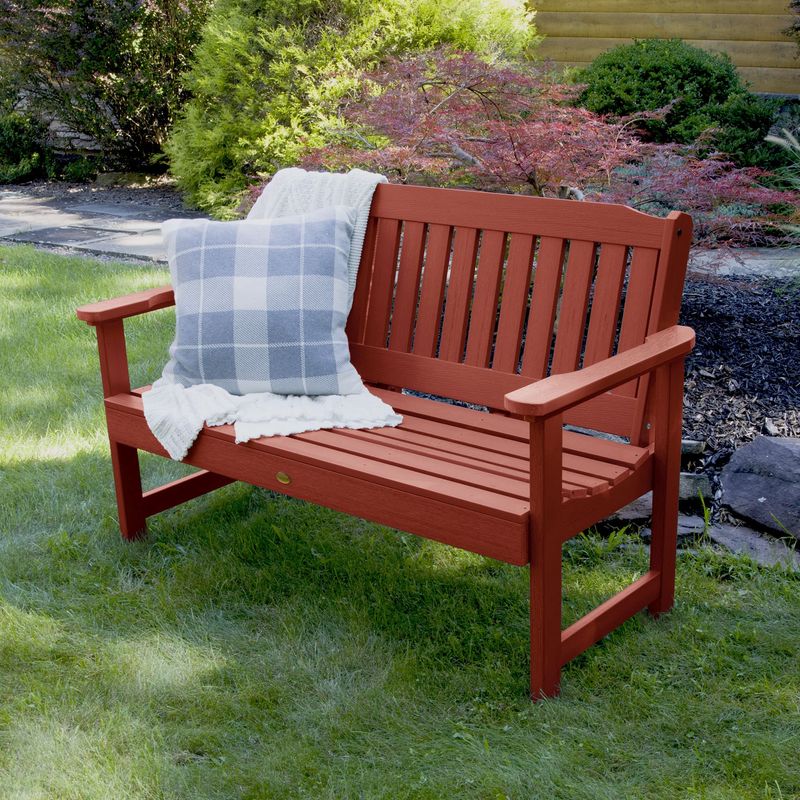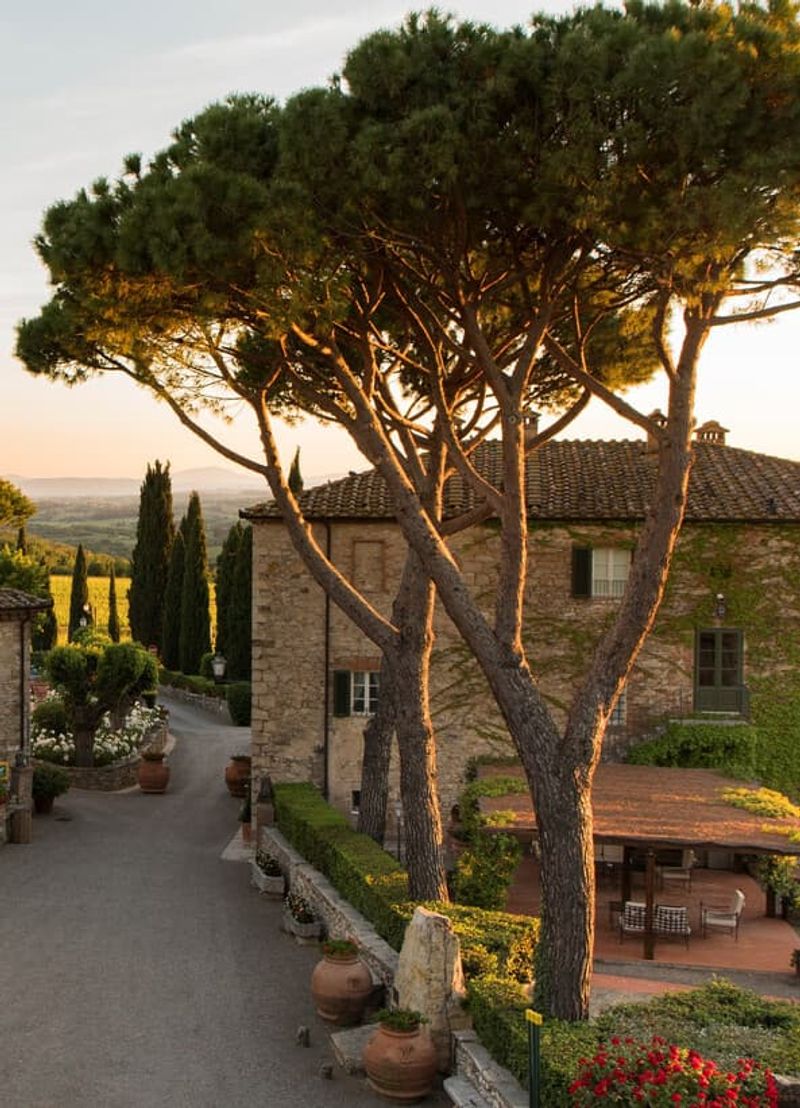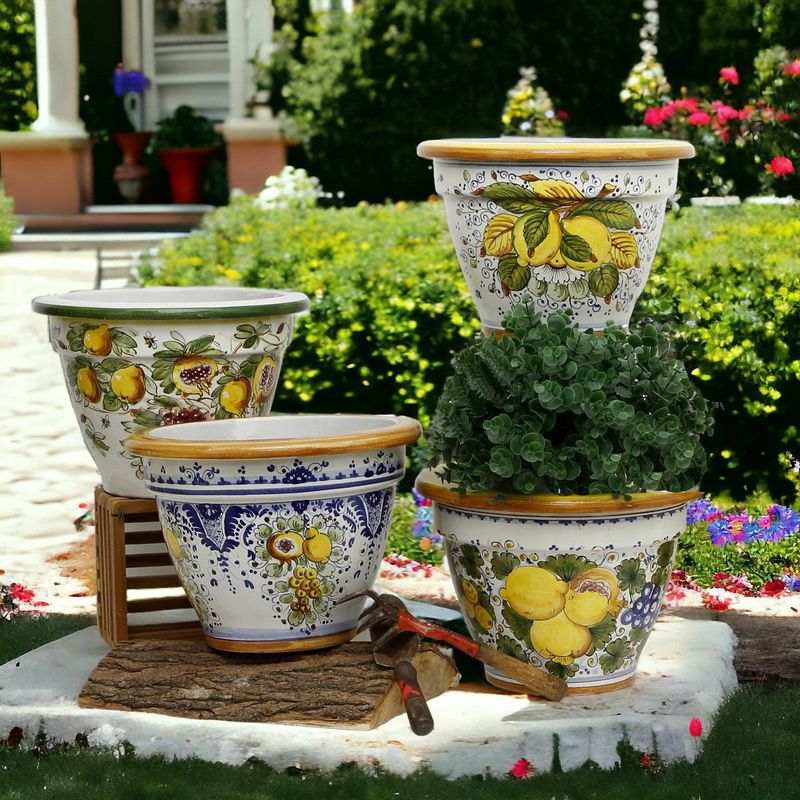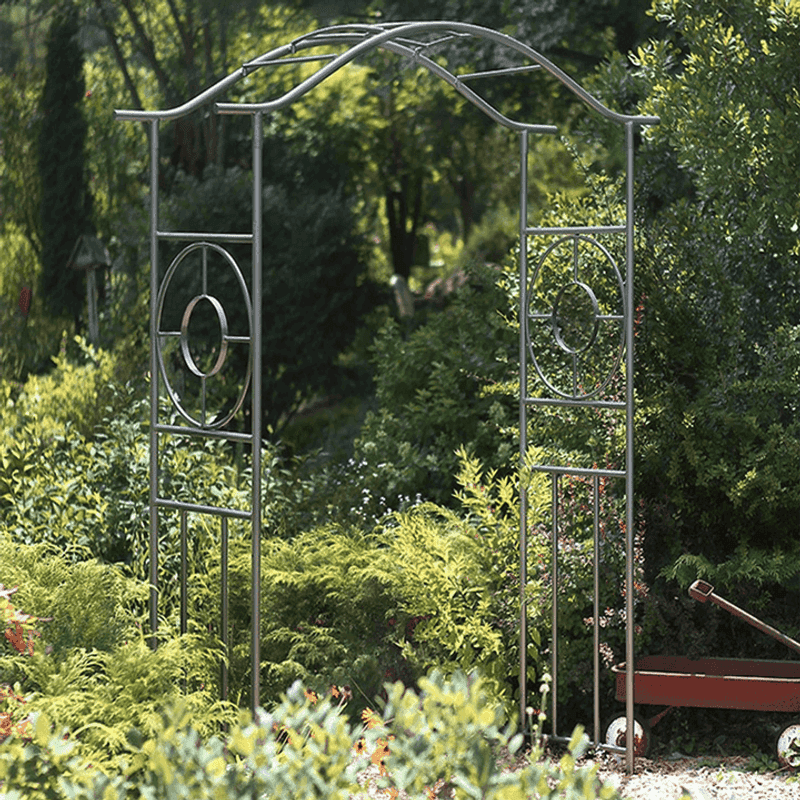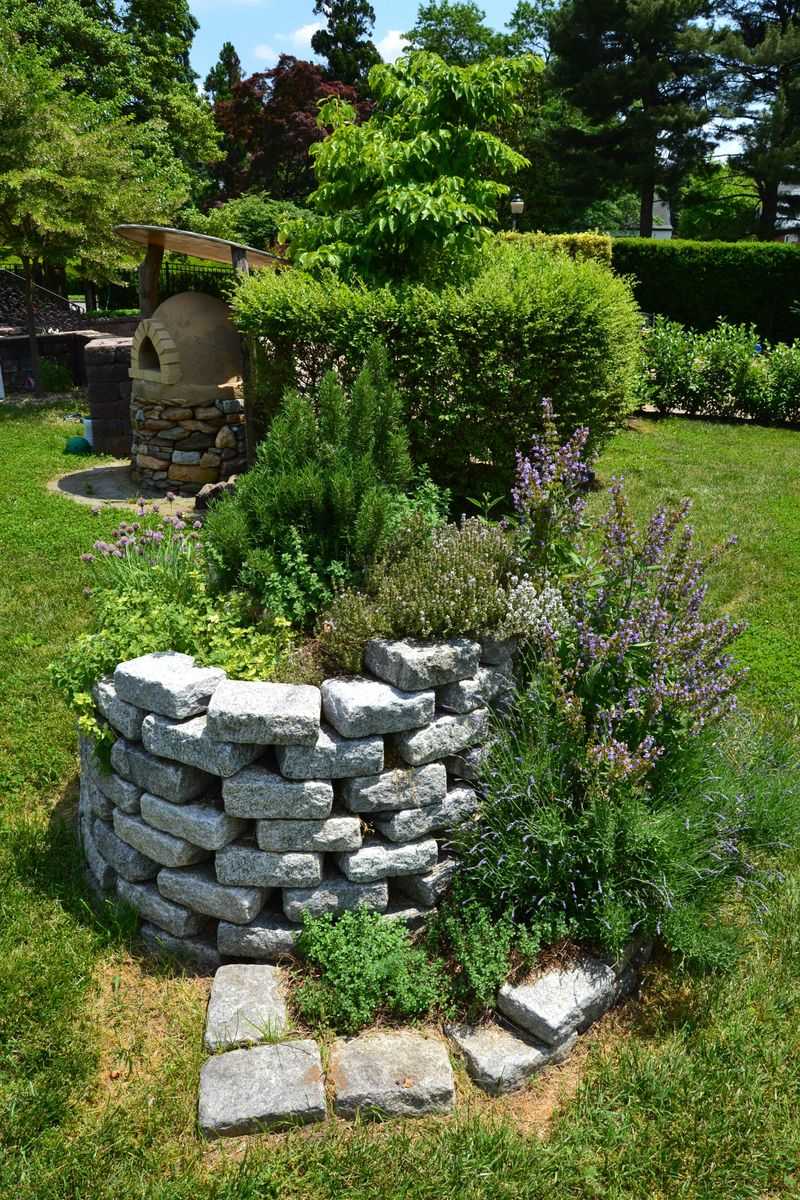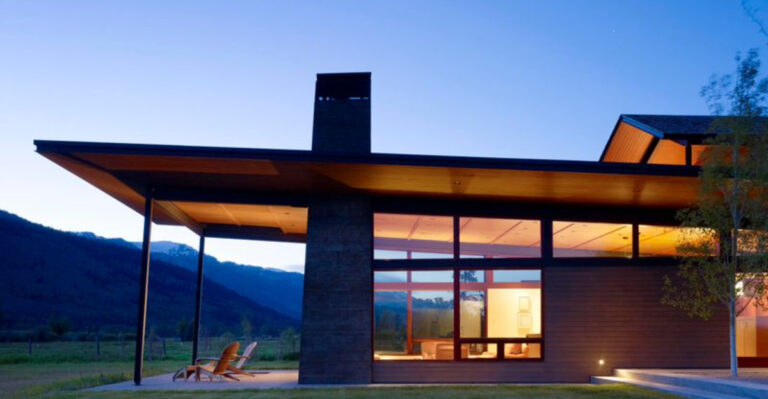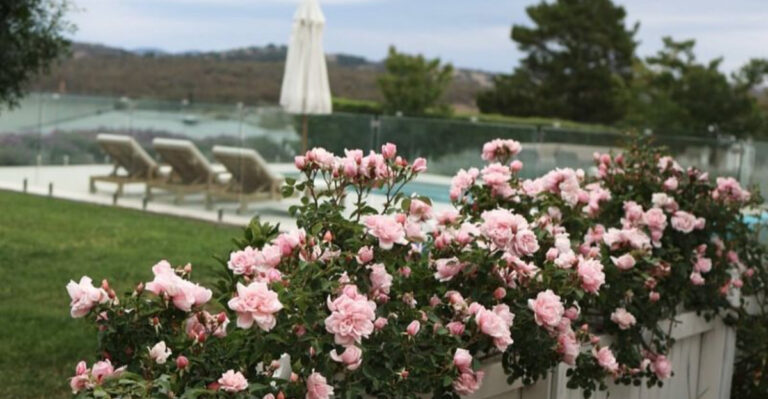20 Tuscan Garden Ideas That Will Transform Your Backyard Into An Italian Villa
Dreaming of the sun-drenched hills of Tuscany but stuck in your own backyard? You’re not alone!
There’s quite a lot of homeowners that long for that rustic Italian charm without booking a flight.
Transforming your outdoor space into a Tuscan paradise is easier than you might think, with simple elements that capture Mediterranean magic right at home.
1. Terracotta Everywhere
Nothing says ‘Tuscany’ quite like the warm orange glow of terracotta pots scattered throughout your garden. These classic containers age beautifully, developing character with each passing season.
For an authentic look, group pots of various sizes rather than placing them individually. Fill them with Mediterranean herbs like rosemary, sage, and thyme for both beauty and practicality.
2. Cypress Trees as Natural Sentinels
Have you ever noticed those tall, slender trees dotting the Tuscan landscape in classic paintings? Italian cypress trees create dramatic vertical elements that immediately transport you to the Mediterranean.
Plant them along driveways or use them to frame garden views. Even in smaller gardens, a pair of cypress trees can create an impressive entrance or highlight a special garden feature with their distinctive silhouette.
3. Rustic Stone Pathways
Wandering through a true Tuscan garden means feeling ancient stones beneath your feet. Creating winding pathways using irregular flagstones or gravel gives your garden that lived-in, centuries-old feeling.
Let small herbs like creeping thyme grow between stones for an authentic touch. The combination of hard and soft elements, plus the gentle fragrance released when you walk on the herbs, creates a sensory experience straight from the Italian countryside.
4. Lavender Borders
The heavenly scent of lavender carried on a warm breeze is quintessentially Mediterranean. Creating borders of this purple beauty adds both structure and sensory delight to your Tuscan-inspired space.
French or English varieties work well in cooler climates if true Italian lavender won’t thrive in your region. Plant in full sun where you can brush against it while walking by, releasing its calming fragrance throughout your garden.
5. Pergola with Climbing Vines
Picture yourself sitting under a vine-covered structure, dappled sunlight filtering through as you sip local wine. A wooden pergola draped with wisteria, grapevines, or climbing roses creates this quintessential Italian garden experience.
The natural canopy provides welcome shade during hot summer months. As an added bonus, the structure helps divide your garden into ‘rooms,’ another characteristic feature of traditional Tuscan landscapes that creates a sense of discovery.
6. Olive Trees as Focal Points
Ancient and gnarled, olive trees stand as living sculptures throughout the Italian countryside. Their silvery-green leaves catch the light beautifully, creating a shimmering effect even on still days.
In colder climates, dwarf varieties can be grown in large pots and brought indoors during winter. Position your olive tree where it can be admired from multiple angles – perhaps centered in a gravel courtyard or as the crowning glory of a raised terrace.
7. Herbal Kitchen Garden
Italians believe the freshest ingredients make the best meals. Carve out a dedicated space for culinary herbs and vegetables – ideally close to your kitchen for easy harvesting while cooking.
Traditional raised beds with stone or brick borders keep things organized while adding architectural interest. Plant Mediterranean essentials like basil, oregano, tomatoes, and peppers. The combination of utility and beauty epitomizes the practical elegance of Tuscan garden design.
8. Stone Water Fountain
The gentle splash of water adds both tranquility and cooling relief to sun-baked Tuscan gardens. A weathered stone fountain becomes an instant focal point, drawing visitors deeper into your outdoor space.
Look for designs featuring lion heads, classical figures, or simple spouts. The fountain doesn’t need to be elaborate – even a small wall-mounted version brings authentic charm. Position it where the sound can be appreciated from seating areas for maximum enjoyment.
9. Rustic Dining Area
Meals in Tuscany are celebrations, often enjoyed outdoors surrounded by the garden’s bounty. Creating a dedicated dining space transforms your garden into a true extension of your home.
A simple wooden table with comfortable seating invites lingering conversations. Place your dining area under a pergola or tree for natural shade, and near fragrant plants like jasmine or roses. String lights overhead create magical ambiance for evening gatherings that stretch into the warm night.
10. Gravel Courtyards
Crunching gravel underfoot announces your arrival in a traditional Italian garden. These simple courtyards require minimal maintenance while providing excellent drainage and a clean backdrop for Mediterranean plants.
Choose warm-toned gravel that complements your home’s exterior. Define the space with large terracotta pots containing citrus trees or structural plants. The beauty lies in the simplicity – this is low-maintenance luxury at its finest.
11. Fragrant Climbing Roses
Those charming images of Italian villas always seem to feature roses climbing over ancient walls. The romance of these blooms, combined with their heavenly scent, creates instant Mediterranean atmosphere.
Choose varieties in soft apricot, pale pink, or white for authentic appeal. Train them over doorways, along fences, or up the sides of buildings. Unlike modern hybrid roses, old-world varieties have a relaxed growth habit that perfectly complements the rustic Tuscan aesthetic.
12. Weathered Garden Ornaments
Forget pristine decorations – in Tuscany, garden ornaments tell stories through their patina. Aged stone statues, weathered sundials, or antique urns add instant history to even the newest garden.
Don’t worry about perfection – chips and moss growth only enhance the charm. Position these pieces where they’ll catch the eye naturally, perhaps at the end of a path or nestled among plantings. The contrast between structured ornaments and wild plantings creates that effortless Italian garden magic.
13. Citrus Trees in Containers
Lemons, oranges, and kumquats bring both fragrance and visual delight to Tuscan gardens. Their glossy leaves and bright fruits create year-round interest, while their sweet blossoms perfume the air in spring.
Growing citrus in decorative pots allows you to move them to protected areas during winter in colder climates. Arrange them symmetrically along pathways or use individual specimens as focal points. Their sculptural quality and Mediterranean heritage make them perfect Tuscan garden companions.
14. Mixed Border of Mediterranean Plants
Who says gardens need manicured perfection? Tuscan gardens embrace a controlled wildness where plants spill into one another in beautiful profusion.
Combine drought-tolerant perennials like salvia, artemisia, and santolina with ornamental grasses for movement. Add vertical accents with foxgloves or hollyhocks. The key is choosing plants that thrive in similar conditions – sunny spots with well-drained soil – creating that effortless Mediterranean abundance.
15. Rustic Stone Walls
Stacked stone walls have defined Italian landscapes for centuries, creating terraces on hillsides and boundaries between properties. Even a short section of dry-stacked stone brings instant Tuscan character to contemporary gardens.
Allow small alpines and succulents to colonize crevices for an established look. The wall itself becomes a microhabitat, supporting beneficial insects and small wildlife. As a bonus, stone retains heat, creating perfect growing conditions for Mediterranean plants placed nearby.
16. Simple Wooden Benches
After tending your Tuscan paradise, you’ll need somewhere to sit back and enjoy it. Unadorned wooden benches placed strategically throughout the garden invite contemplation and rest.
Position seating where you can enjoy a special view, scent, or sound – perhaps facing your fountain or under a fragrant climbing rose. Unlike elaborate furniture sets, these simple benches blend harmoniously with the landscape.
17. Umbrella Pines for Shade
The distinctive silhouette of Italian stone pines (also called umbrella pines) instantly evokes Mediterranean landscapes. Their broad, flat canopies create natural shade pavilions in the garden.
In smaller spaces, a single specimen can serve as the garden’s crowning glory. Plant where you can appreciate the tree’s beautiful form and textured bark. The dappled shade beneath creates a perfect microclimate for shade-loving Mediterranean plants like cyclamen and hellebores.
18. Rustic Pottery Collection
Beyond just terracotta pots, authentic Tuscan gardens showcase a variety of handcrafted ceramics. Collecting pieces with different glazes and patterns adds personality while maintaining a cohesive Mediterranean feel.
Mix utilitarian water jugs with decorative plates and bowls. Display them on stone walls, hang them from fences, or use them as unexpected focal points.
19. Simple Wrought Iron Elements
Graceful yet sturdy, wrought iron has adorned Italian gardens for generations. From gates and trellises to simple plant supports, these blackened metal elements add structure without overwhelming the natural beauty.
Look for pieces with simple scrollwork rather than ornate designs. The contrast between delicate ironwork and abundant plantings creates visual tension that keeps the eye moving through the garden. As plants grow through and around these supports, the line between man-made and natural beautifully blurs.
20. Aromatic Herb Spiral
Ingenious Italian gardeners have long known that vertical spirals maximize growing space while creating visual interest. Building a stone herb spiral brings both function and beauty to your Tuscan garden.
The structure creates different microclimates – sunny and dry at the top, cooler and moister at the bottom. This allows you to grow a variety of Mediterranean herbs in one compact space. The spiral shape naturally draws the eye upward, making even small gardens feel more expansive.

